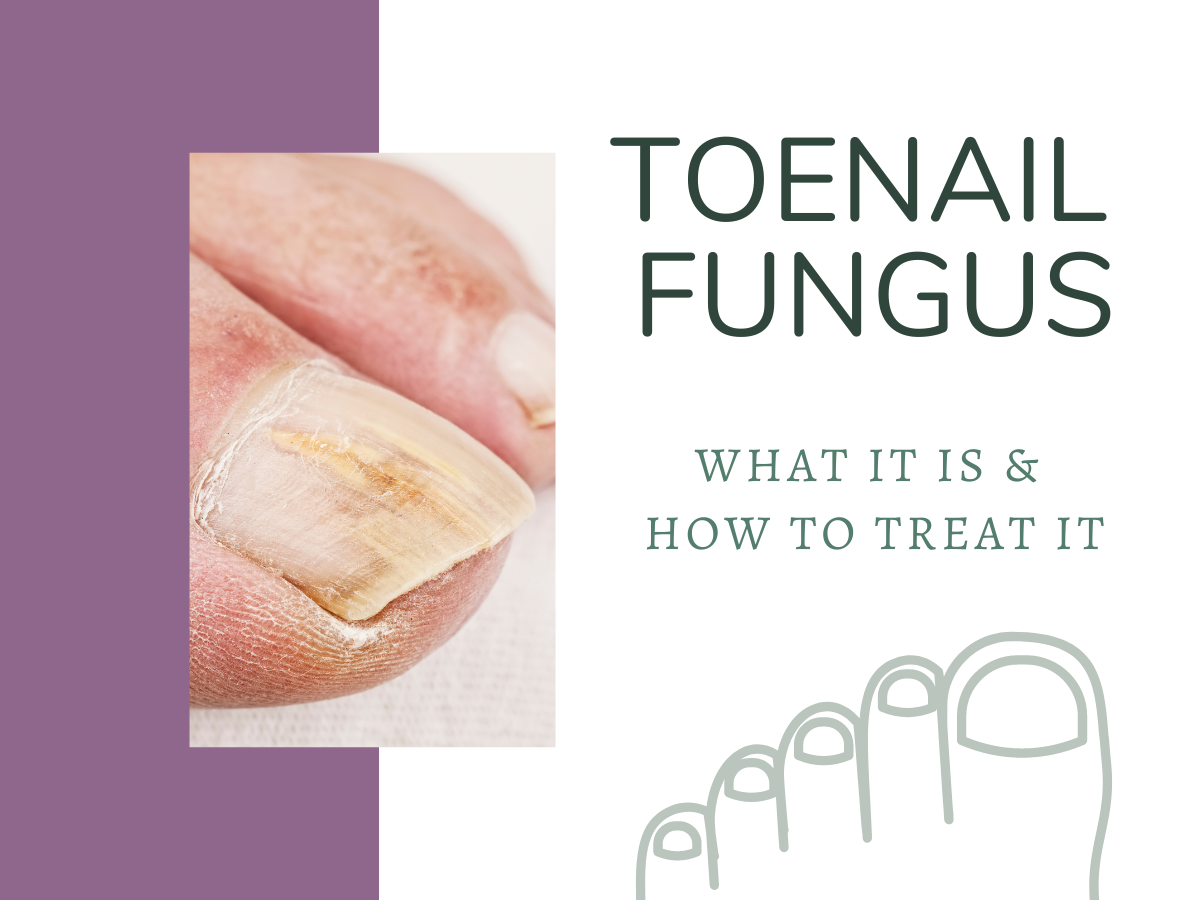I shower regularly but my toenails look yellow, thick, and like something is growing under them. What’s wrong with my nails?
Toenail fungus doesn’t play favorites with any special type of person. It doesn’t matter if you’re clean, dirty, or have never had a pedicure, fungus will appear whether you want it to or not. In fact, one study showed that almost 50% of people over the age of 40 have experienced some type of toenail fungus. Even though fungal infections can occur in anybody, they do seem to be more prevalent among athletes.
The typical athlete’s foot fungus, called a dermatophyte, is the same fungus that infects your toenails. Fungus grows best in a moist, dark environment. Your shoes are a fungus’s favorite place to grow and thrive. The affected toenails can have a whitish superficial infection or a yellow to brown discoloration under the toenails that seems to destroy the nail as it grows. Long standing fungal toenails look like thick, brownish-yellow humps growing on the end of your toes. The thickness makes them painful and susceptible to a secondary bacterial infection (paronychia). This infection can be very dangerous, especially in diabetics where it has been linked to gangrene.
How do we diagnosis toenail fungus? A toenail biopsy can be used to diagnose onychomycosis. We take a small piece of the nail and send it for a special stain that shows the fungus. Do not assume you have onychomycosis. Psoriasis and other skin disorders, as well as chronic trauma, can look like fungus. Also, a melanoma under the nails can mimic fungus, but can be deadly if there is a delay in diagnosis. If you are suspicious of an area being a possible toenail fungus, don’t hesitate to call us for an appointment.
How can I prevent toenail fungus?
1. If you get regular pedicures, bring your own instruments or go to a spa that sterilizes their instruments in an autoclave. Toenail fungus is contagious and can spread if the instruments nail salons are using aren’t properly sanitized between uses.
2. Sanitize your toenail clippers with alcohol before you use them.
3. It is also recommended that you regularly clean your shoes with either an antibacterial spray, like Lysol, or even better, an antibacterial with an antifungal. Make sure your shoes can dry thoroughly before wearing them again.
4. Change your socks regularly (a few times a day if you have sweaty feet) and keep your feet clean and dry. Remember, the fungus thrives in moist conditions.
5. Keep your athletic shoes dry and also change them often. You can try buying your athletic or workout shoes a half size or full size large in order to have plenty of room for your toes.
How is toenail fungus treated? There is a lot of misinformation out there about toenail fungus. Make an appointment with us first so we can confirm your course of action is an appropriate one. Topical therapy should have some penetration of the nail plate like Gordochrom, organic tea tree oil, Nailstat or prescription (Penlac) ciclopirox nail lacquer. This should be coupled with a nail treatment plan customized for you. If this doesn’t work after several months, oral medication may be needed, but that may have some negative side effects.
It takes at least 6 to 12 months for the toenails to grow out completely. Treatment is a lengthy process. Relapse is also common, so it’s important to play offense (treat the fungus) and defense (try to prevent the fungus) at the same time. If you have noticed discoloration or whitish streaks in only one of your toenails, it is very important to treat it at this stage. There is still hope! This is the earliest stage and can most likely be treated easily if you stop the process in its tracks.
At Howard County Foot and Ankle, we treat everything from warts and fungal toenails to flatfeet and heel pain. Many people come to us for diabetic foot care or simply because they have foot pain or ankle pain and don’t know the cause of it. We handle emergencies such as fractures and infections as well. Dr. Bui performs a wide variety of surgeries and specializes in reconstructive surgery of the foot and ankle. You won’t find a better foot doctor than our highly skilled and highly qualified, Dr. Christina Bui! Call or email us to ask any questions you might have. We would love to be your go-to Podiatrist!





